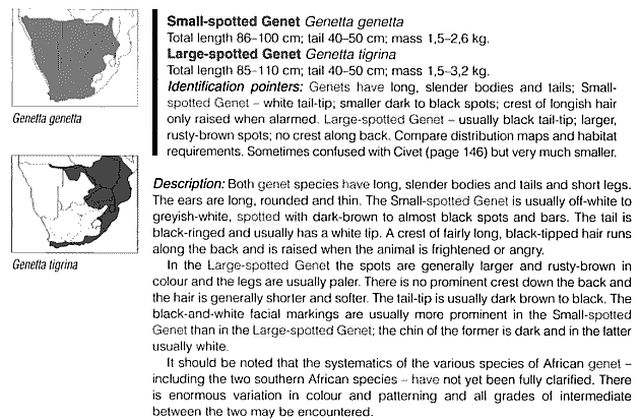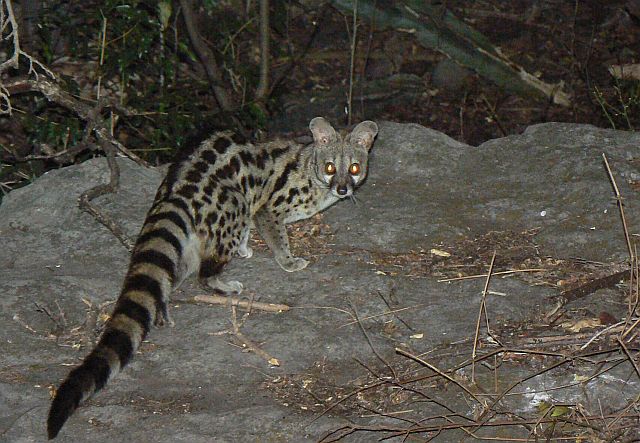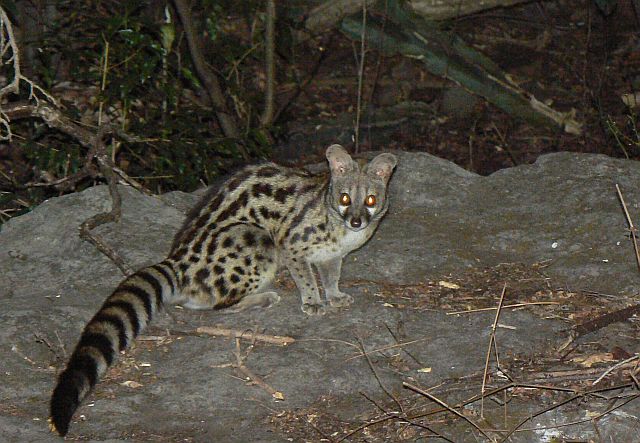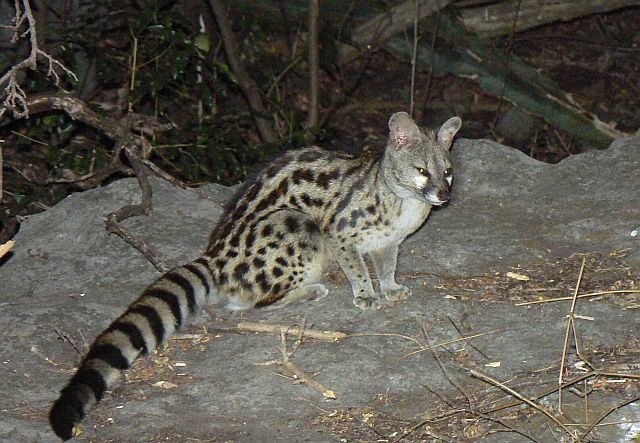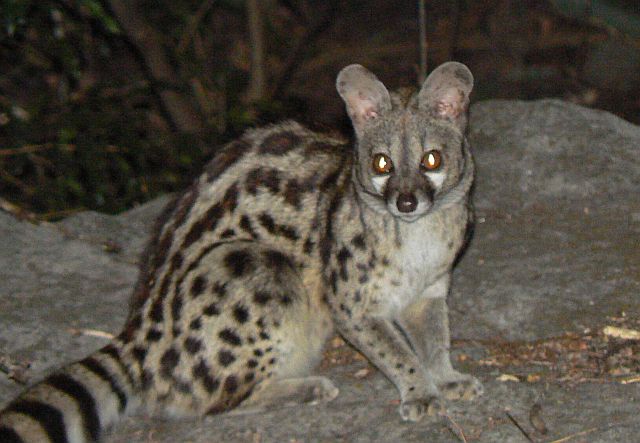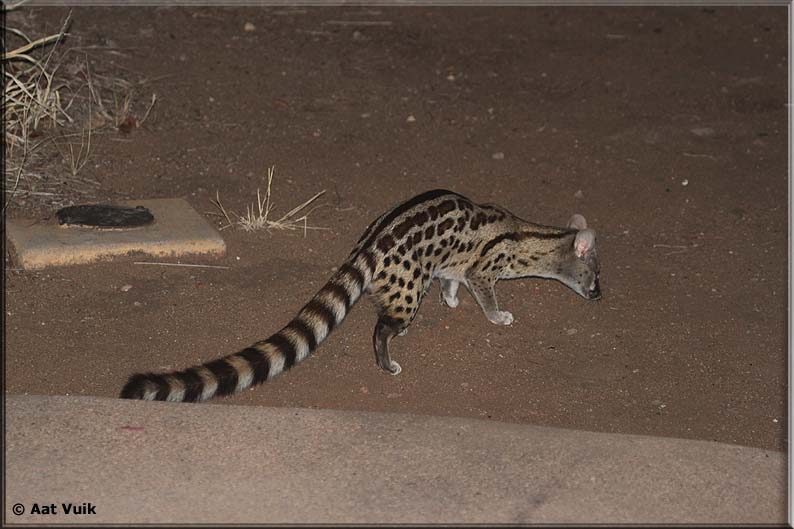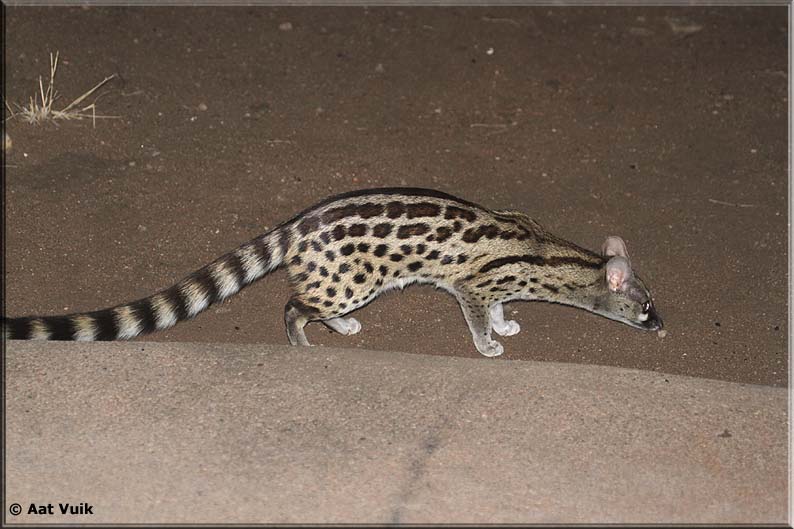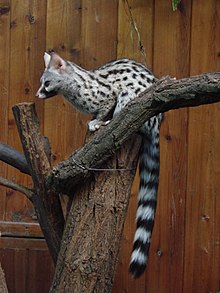 Common Genet
Common GenetGenets are feliforms, and are related to cats, but more closely related to mongooses. Most of them have spotted coats, long, banded tails, small heads, and large ears. (The common genet is the most variable morphologically of all genets and is often misidentified.[3][6]) They are able to move through any opening that their head can fit through. Like civets, genets have strong musk glands, located by the anus, which are used for territorial, sexual and social purposes.
Genets possess extremely long tails, typically around one to one and a half times the length of their bodies. Their bodies are typically 16.9 to 22.9 inches long, while their tails are approximately 15.4-20.9 inches long. These longs tails provide a highly effective counterweight that enables them to easily maintain balance as they leap from tree limb to tree limb. However, the length of genets' tails does not necessarily correspond to them inhabiting a more woody habitat. They are not strictly terrestrial, and spend much of their time in trees.[9] Genets have semi-retractable claws, which they use for climbing and holding prey, but not for fighting.
The color of the fur is variable, generally grayish or yellowish, with brown or black spots on the sides, sometimes arranged in rows. The tail may be black with white rings, and completely black genets are fairly common.
Genets can move their eyes within their sockets, but eye mobility is limited; head movement is required. Their ears can move via the pinna in order to locate sounds. The nose has a dual function, both olfactory and tactile perception. Smelling is aided by the rhinarium, utilized in many other mammals. Adult genets typically weigh around 2.2 to 6.6 pounds, with an average weight of 4.4 pounds




